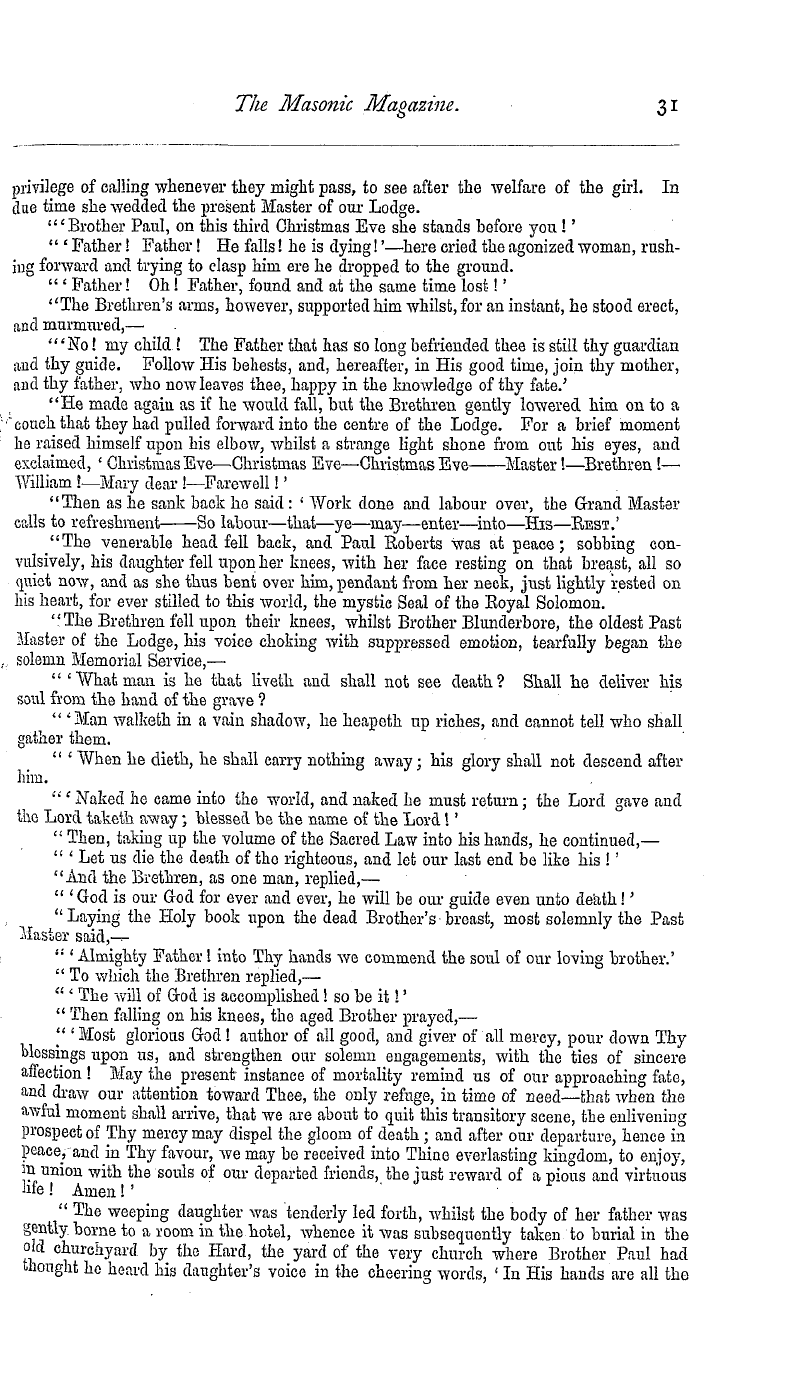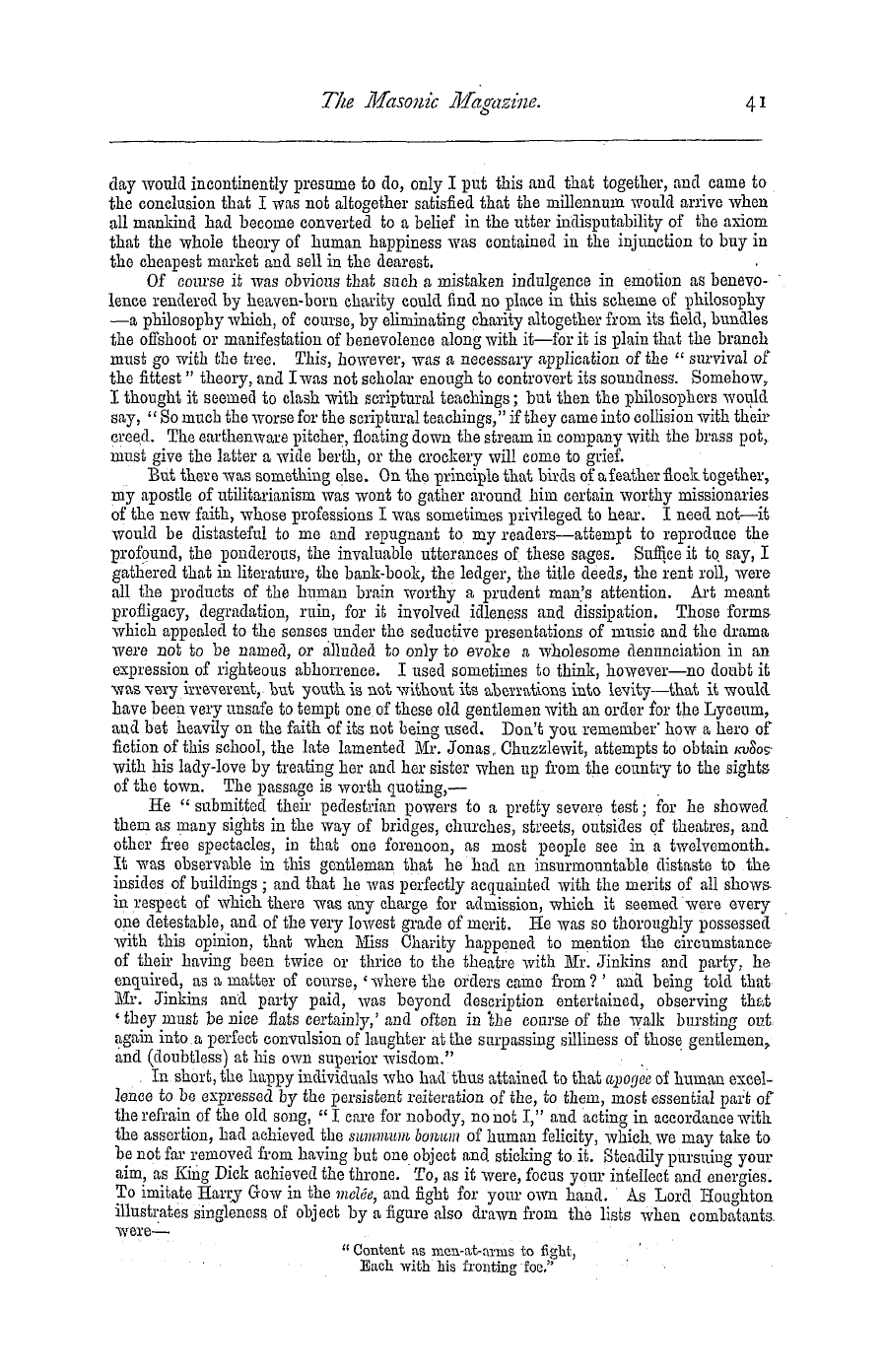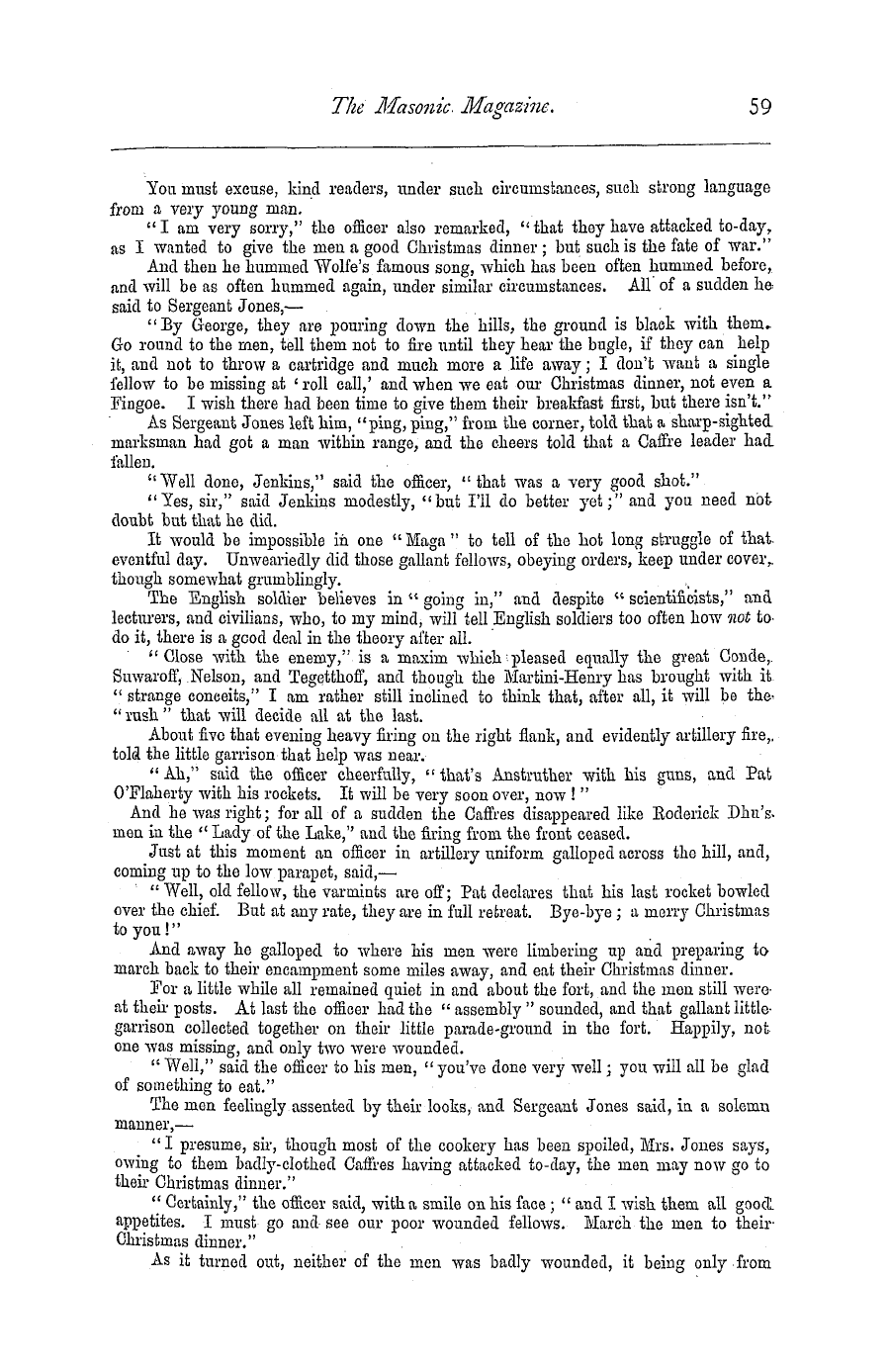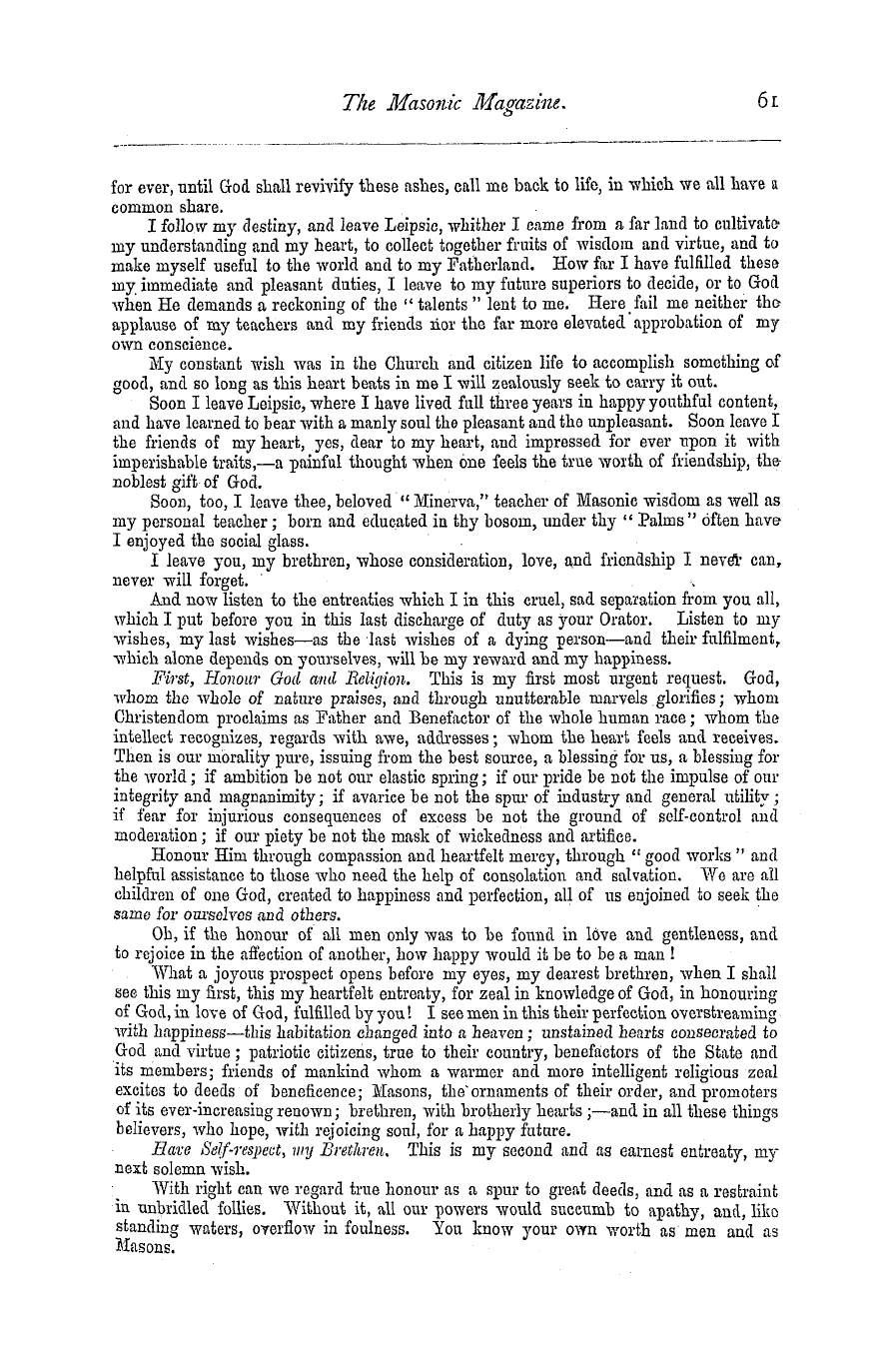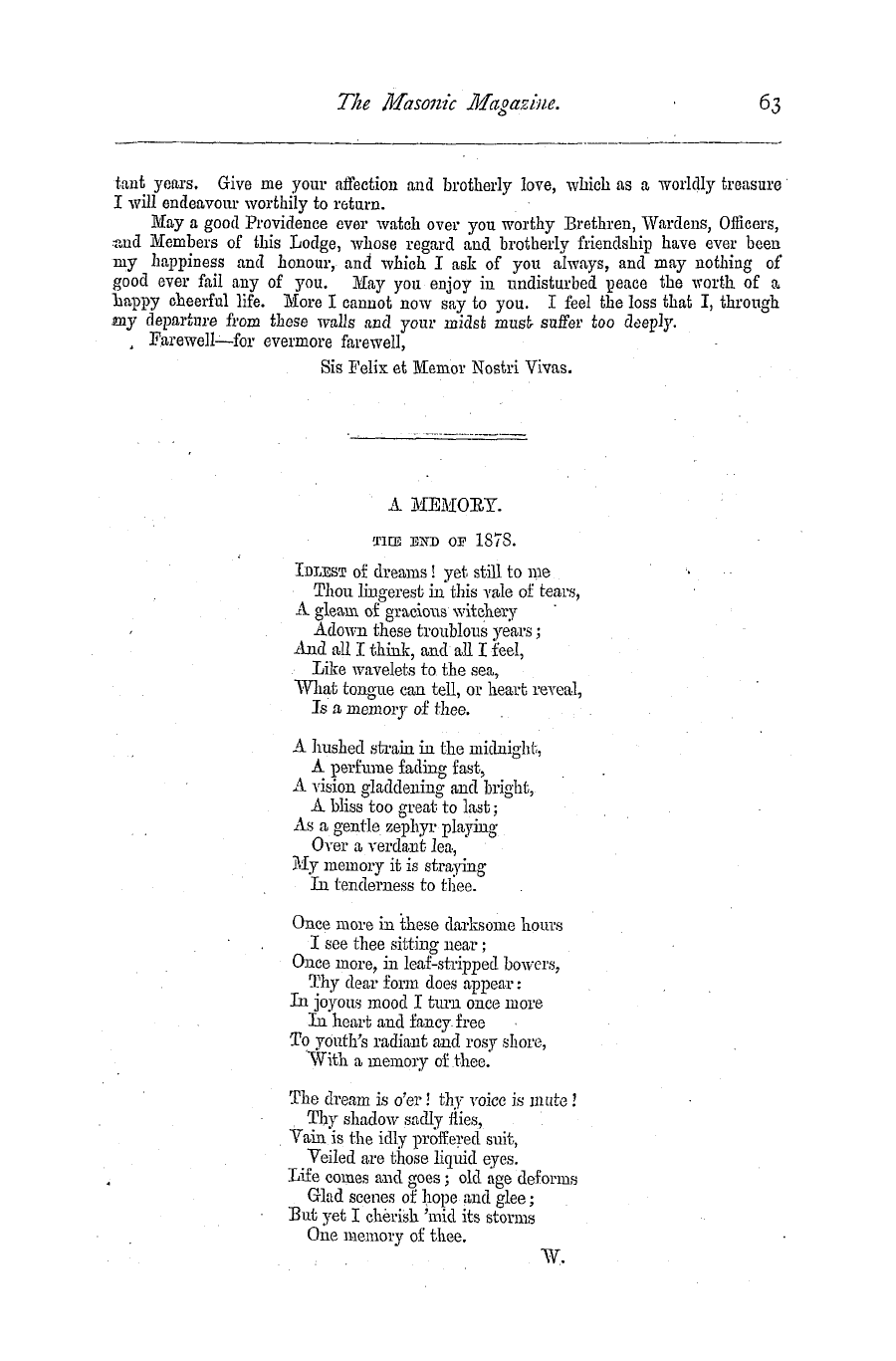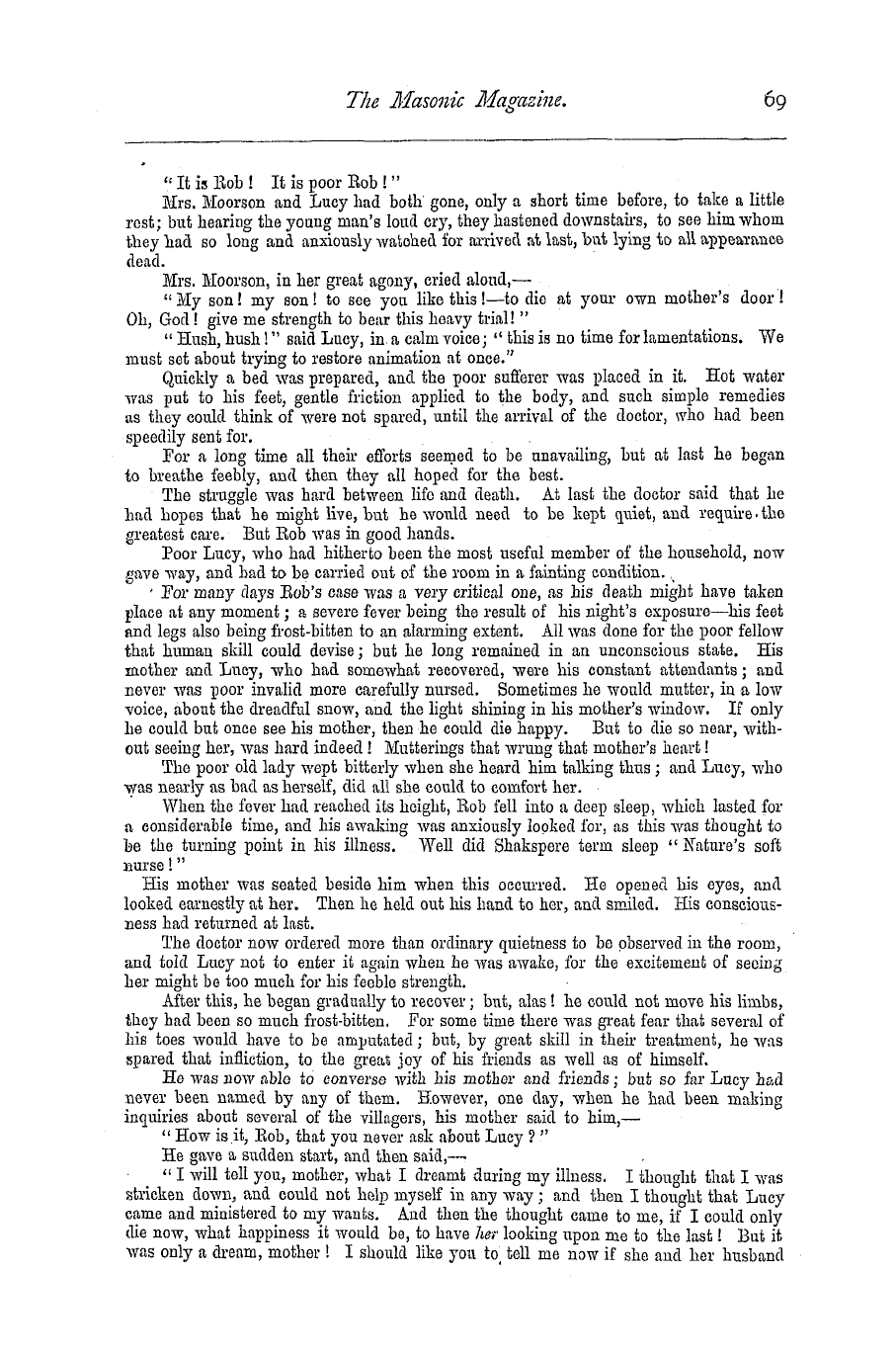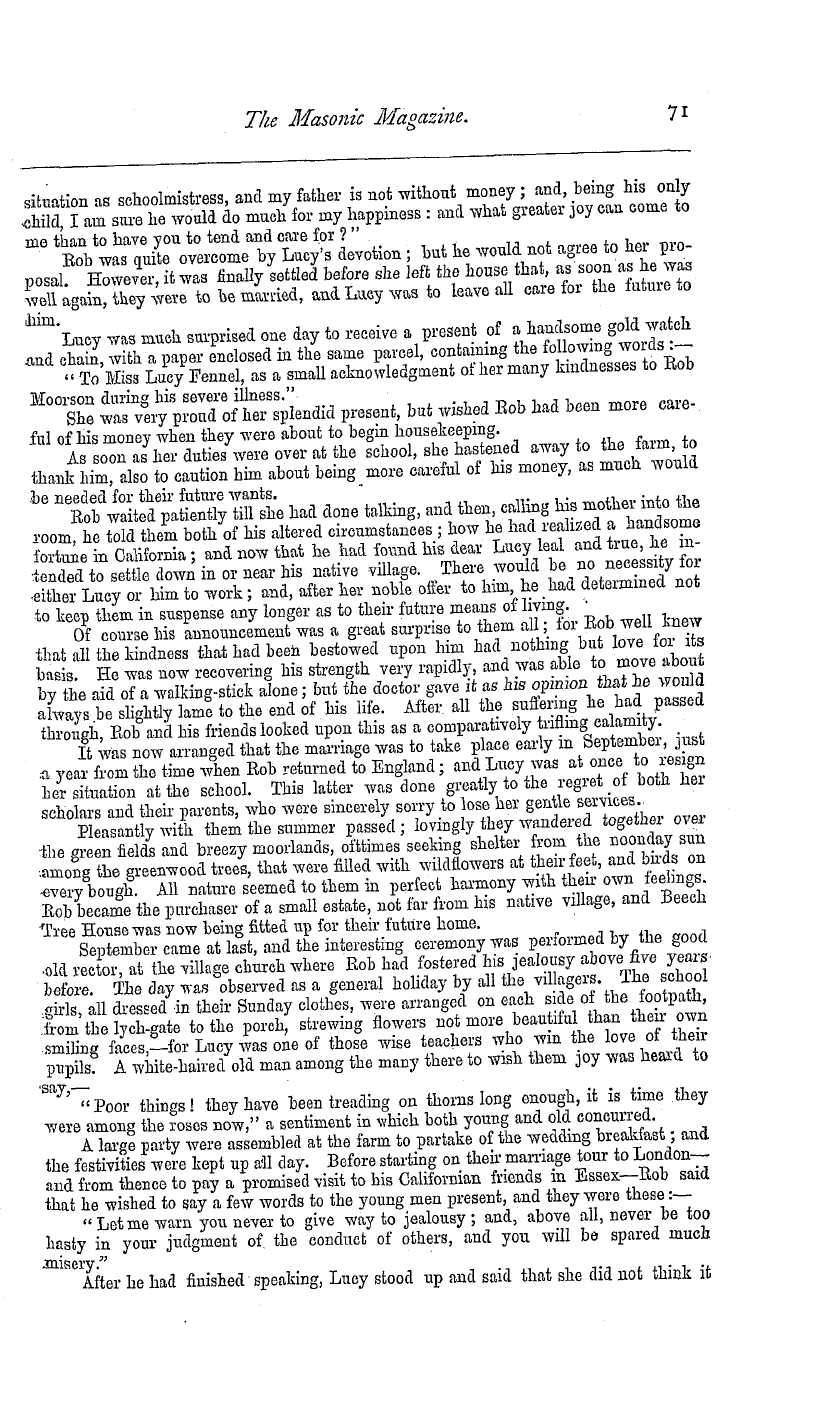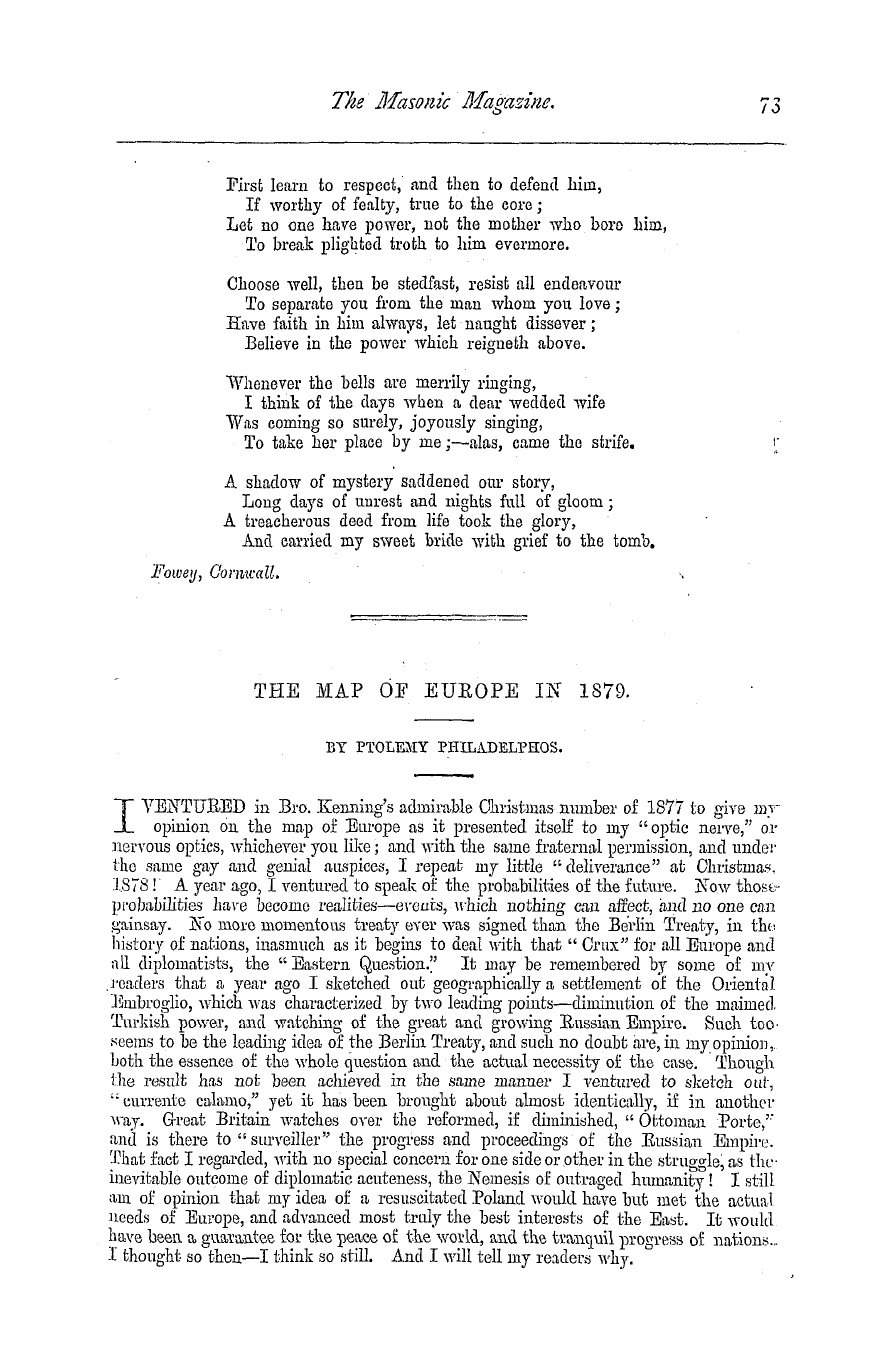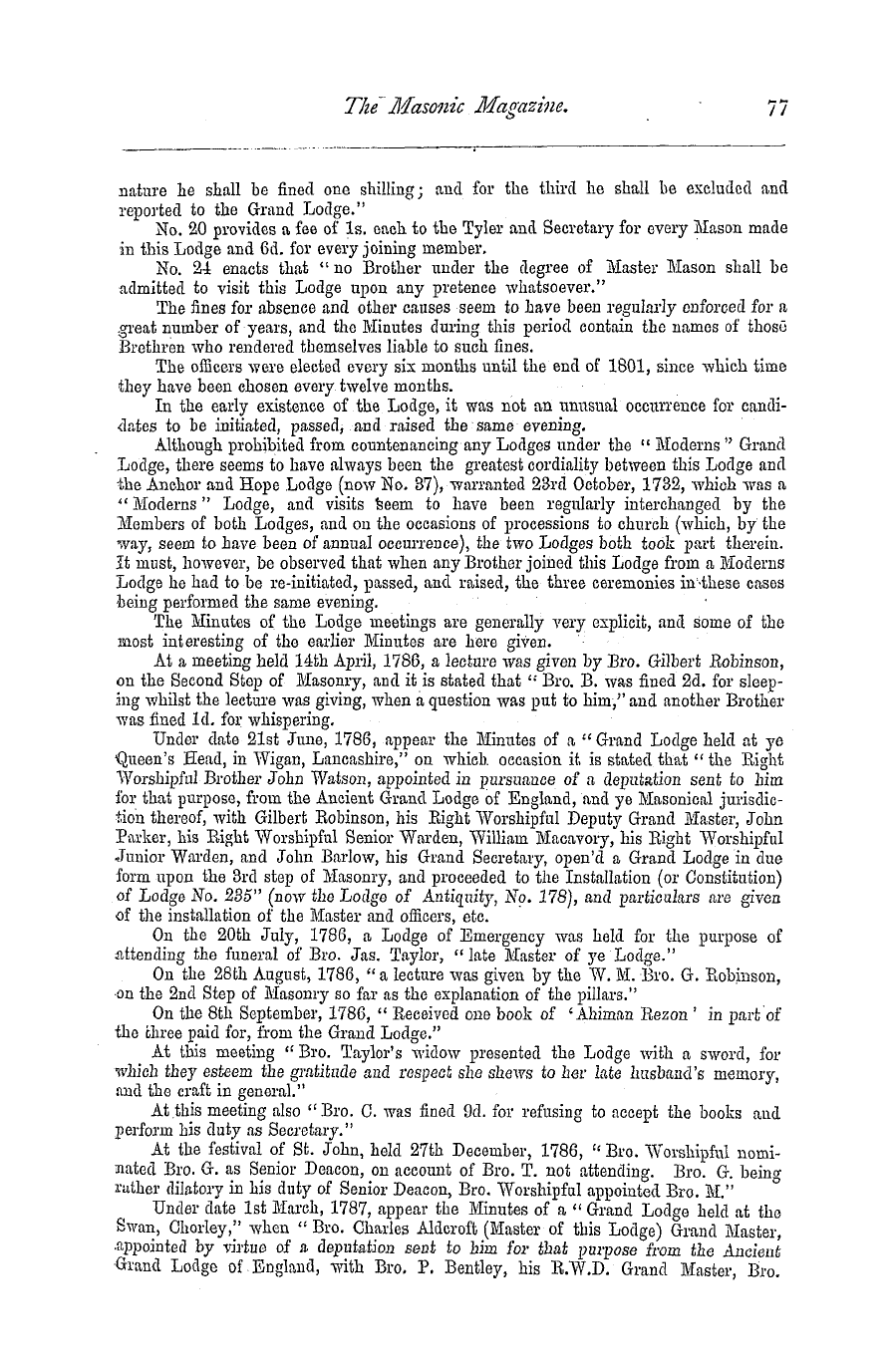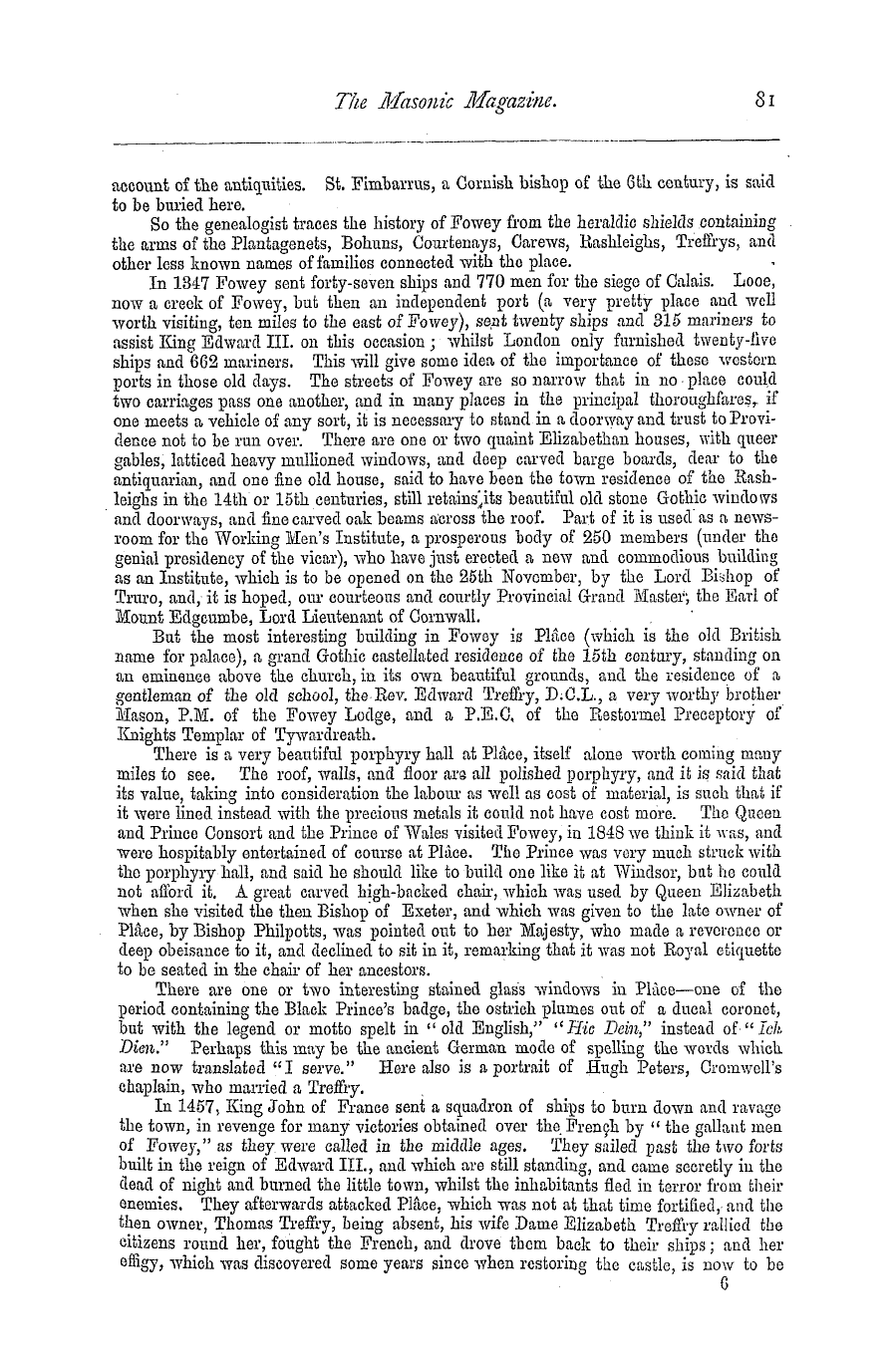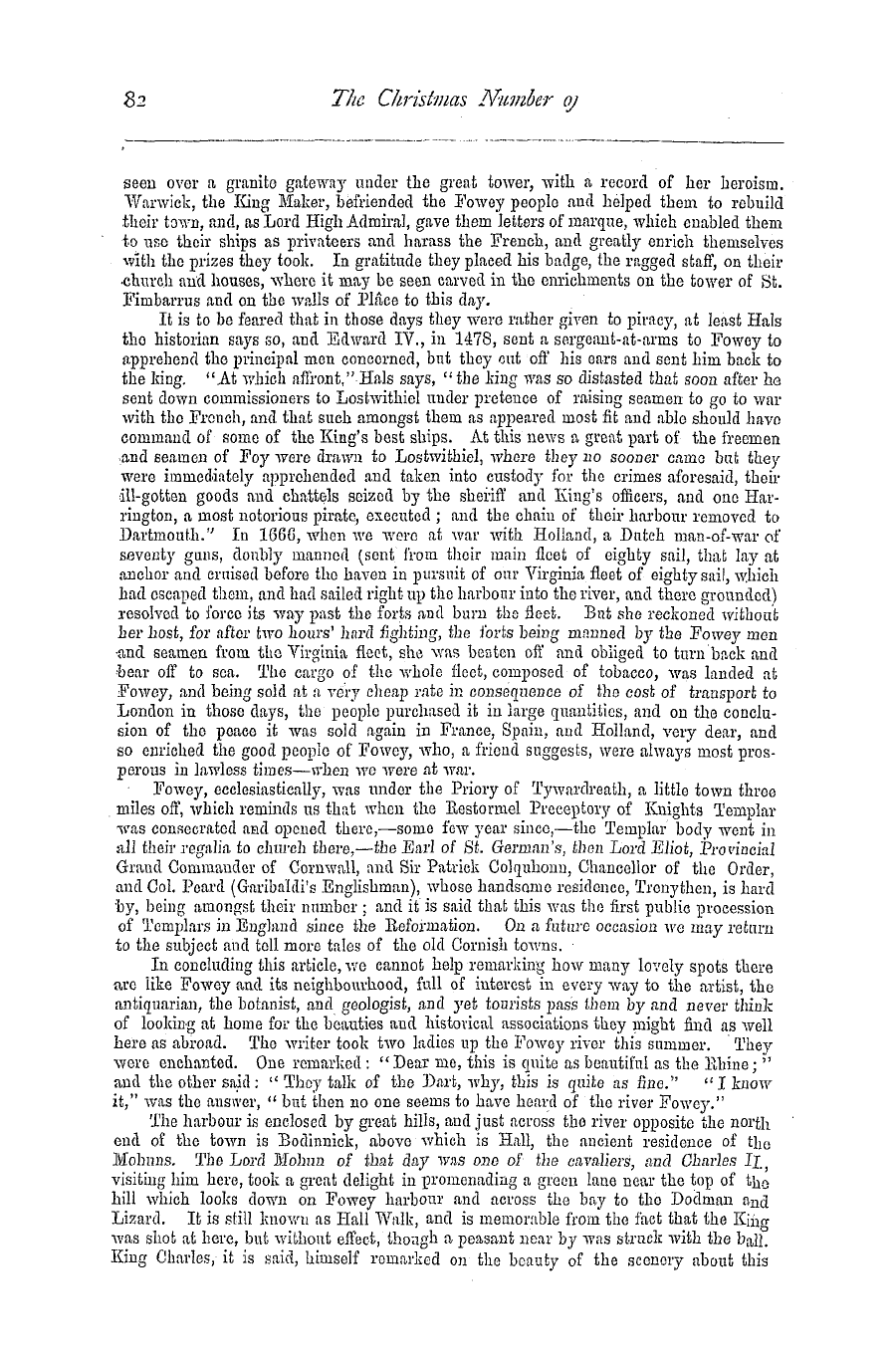-
Articles/Ads
Article HERMES TRISMEGISTUS. ← Page 2 of 2
Note: This text has been automatically extracted via Optical Character Recognition (OCR) software.
Hermes Trismegistus.
misunderstandings which so frequently arise from the use of terms of doubtful or hidden meaning . The Philosophy and the Brotherhood denominated " Hermetic " owe their origin , as is commonly held , to a very ancient philosopher , whose name we have written at the head of this article . Trismegistus means " thrice exalted , " and was applied to this mythical teacher who was regarded both by the ancient Egyptians and a portion of the Greeks as the discoverer of all sciences ; the originator of the alphabet and of written of
language ; Geometry , Astronomy , Chemistry , etc . Tradition gives him the credit of being the first to divide the day into hours , and the year into seasons . So it is said of him that he made important investigations into the phenomena of the natural world , for result of which was the announcement of laws and principles supposed to entitle him to rank among the world ' s great philosophers . He is believed to have written many books ; and certain writings bearing the name of this mythical personage
were translated into Greek about the time of the Ptolemies , fragments of which translations remain even to the present clay . It may be observed that these fragments are of a very crude and unsatisfactory character . Doubtless they are but a jumble of systems and teachings gathered from a variety of sources . The best informed oriental scholars of modern times are agreed in the belief that Hermes Trismegistus was bnt a personification of the Egyptian priesthood . Eegarded in the mystical sense , Hermes stands forth as having a Divine endowment of light and intelligence—the incarnation of the Supreme mind—the primitive type of Plato ' s Loqos .
But whatever the character of his wisdom and works—whether a real or a mystical personage—it is chiefly as the fabled inventor of alchemy that he has been most remembered and honoured . His disciples have regarded the system of a philosophy bearing his name as charged with a power to discover the philosopher ' s stone and the elixir of life . They have gathered about this system , if it may be called a system , prostituting the name of science to certain incantations , magical ceremonies , the use of cabalistic
forms and words , whereby they have assumed to calculate nativities , to transmute base metals into gold , and to prolong earthly existence to an indefinite period . The dupes of the Hermetic art have not been few ; the grain of scientific truth and philosophy concealed within a mass of rubbish has been sufficient to attract some minds to a mystical and wonder-seeking procedure , whilst pretenders and charlatans have flourished in promulgating a system of delusion to which so many were drawn simply on the ground of great mystery and great pretension . The phflosophy was assumed to be most profound , and what seemed to be absurdity in word and teaching was blandly put forth as hidden truth only to be understood by a favoured few .
Thus Hermetic societies have flourished under a variety of forms and manifestations . Some of these associations have been of higher and some of lower order . In ancient clays , perhaps , something of science and of a more advanced knowledge than the common mind was ready to receive , drew together and held together seekers after truth who may ha \ 'e taken the name of Hermetic disciples . That there were these mystic Brotherhoods both in Egypt and in Greece seems reasonably certain . Those
old organizations represent the best elements in the Hermetic chain . There was something of a degeneracy both in leaders and ideas when the societies of comparatively modem times were formed ; when the Hermetic art was taken up and made a sanction for vain themes ancl foolish practices . In this way originated a number of Fraternities the objective point of whose search was wisdom , but the practical result of whose endeavours was exceedingly unsatisfactory . Hermetic Masonry , however much or little
may be included in that term , is to be classed among those societies which , having some purpose of truth ancl blessing , have yet never proved themselves of much practical value to the world . That there is some relation between the old system of Hermeticism and the Masonic art cannot be denied . Masonry is not , however , by any means to be identified with the Hermetic Philosophy and Brotherhood . It may have some things in common with the older teachings , but the Craft of to-day do not hold to any such beliefs or practices as are taught in the Hermetic manuscripts . Brethren of these latter times are practical seekers after the truth and not less workers for the good of humanity . They aim so to adapt Masonry as to make it most useful and valuable to mau .
Note: This text has been automatically extracted via Optical Character Recognition (OCR) software.
Hermes Trismegistus.
misunderstandings which so frequently arise from the use of terms of doubtful or hidden meaning . The Philosophy and the Brotherhood denominated " Hermetic " owe their origin , as is commonly held , to a very ancient philosopher , whose name we have written at the head of this article . Trismegistus means " thrice exalted , " and was applied to this mythical teacher who was regarded both by the ancient Egyptians and a portion of the Greeks as the discoverer of all sciences ; the originator of the alphabet and of written of
language ; Geometry , Astronomy , Chemistry , etc . Tradition gives him the credit of being the first to divide the day into hours , and the year into seasons . So it is said of him that he made important investigations into the phenomena of the natural world , for result of which was the announcement of laws and principles supposed to entitle him to rank among the world ' s great philosophers . He is believed to have written many books ; and certain writings bearing the name of this mythical personage
were translated into Greek about the time of the Ptolemies , fragments of which translations remain even to the present clay . It may be observed that these fragments are of a very crude and unsatisfactory character . Doubtless they are but a jumble of systems and teachings gathered from a variety of sources . The best informed oriental scholars of modern times are agreed in the belief that Hermes Trismegistus was bnt a personification of the Egyptian priesthood . Eegarded in the mystical sense , Hermes stands forth as having a Divine endowment of light and intelligence—the incarnation of the Supreme mind—the primitive type of Plato ' s Loqos .
But whatever the character of his wisdom and works—whether a real or a mystical personage—it is chiefly as the fabled inventor of alchemy that he has been most remembered and honoured . His disciples have regarded the system of a philosophy bearing his name as charged with a power to discover the philosopher ' s stone and the elixir of life . They have gathered about this system , if it may be called a system , prostituting the name of science to certain incantations , magical ceremonies , the use of cabalistic
forms and words , whereby they have assumed to calculate nativities , to transmute base metals into gold , and to prolong earthly existence to an indefinite period . The dupes of the Hermetic art have not been few ; the grain of scientific truth and philosophy concealed within a mass of rubbish has been sufficient to attract some minds to a mystical and wonder-seeking procedure , whilst pretenders and charlatans have flourished in promulgating a system of delusion to which so many were drawn simply on the ground of great mystery and great pretension . The phflosophy was assumed to be most profound , and what seemed to be absurdity in word and teaching was blandly put forth as hidden truth only to be understood by a favoured few .
Thus Hermetic societies have flourished under a variety of forms and manifestations . Some of these associations have been of higher and some of lower order . In ancient clays , perhaps , something of science and of a more advanced knowledge than the common mind was ready to receive , drew together and held together seekers after truth who may ha \ 'e taken the name of Hermetic disciples . That there were these mystic Brotherhoods both in Egypt and in Greece seems reasonably certain . Those
old organizations represent the best elements in the Hermetic chain . There was something of a degeneracy both in leaders and ideas when the societies of comparatively modem times were formed ; when the Hermetic art was taken up and made a sanction for vain themes ancl foolish practices . In this way originated a number of Fraternities the objective point of whose search was wisdom , but the practical result of whose endeavours was exceedingly unsatisfactory . Hermetic Masonry , however much or little
may be included in that term , is to be classed among those societies which , having some purpose of truth ancl blessing , have yet never proved themselves of much practical value to the world . That there is some relation between the old system of Hermeticism and the Masonic art cannot be denied . Masonry is not , however , by any means to be identified with the Hermetic Philosophy and Brotherhood . It may have some things in common with the older teachings , but the Craft of to-day do not hold to any such beliefs or practices as are taught in the Hermetic manuscripts . Brethren of these latter times are practical seekers after the truth and not less workers for the good of humanity . They aim so to adapt Masonry as to make it most useful and valuable to mau .














































































